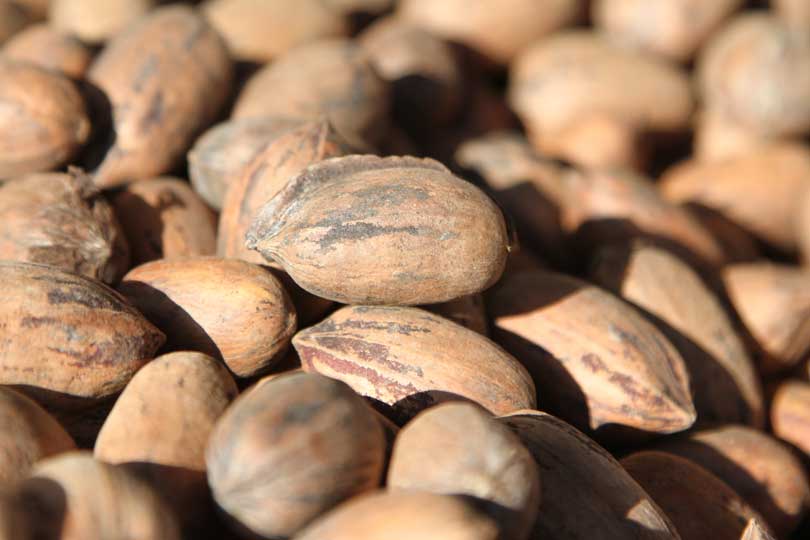By Jennifer Dorsett
Field Editor
The latest hurricane to make its way to the U.S., Hurricane Sally, devastated Alabama’s pecan industry. This year’s crop was completely destroyed in Baldwin County, the Alabama’s top pecan producing county, according to the news service AL.com.
While the decimation of the pecan crop is a bad situation for Alabama pecan growers, Texas pecan farmers could benefit by picking up those sales.
And this year’s Texas pecan production appears better than expected. Although some regions of the Lone Star State are expecting a below-average crop, according to Texas A&M AgriLife Extension Service Horticulturist Dr. Larry Stein, other Texas growers are seeing an excellent year.
In Central Texas, pecan harvest is just getting underway.
San Saba County Farm Bureau member Winston Millican said the shucks on his Pawnee variety pecans began cracking open in mid-September, and so far, it looks like a nice crop.
“We start harvesting the Pawnees around the first of October. Then, I wait for the other varieties to get ready, when we usually wait for a freeze,” Millican said. “Sometime about the first week of November is when we’ve always started.”
The trees begin blooming around mid-April, with shells hardening and growth occurring over the next 90 days. This phase determines the size of the nut, according to Millican. And timely rains this season helped to fill out the kernels nicely.
”In this area, we have enough rain where our irrigation is supplemental, but we don’t have so much rain that we have to spray a lot of fungicides,” Millican said. “We have a long growing season and really deep soil here. We’re really in the middle, geographically, of the 15 U.S. states that grow pecans, so we have an ideal location for growing them.”
The Millicans are longtime pecan growers in the area. The family has orchards with trees more than 100 years old to trees planted just last year. Trees have been grafted and “blended” throughout the years, with as many as 20 varieties of pecans in one orchard, he said.
“We call those ‘mixed budded’ or a ‘Texas blend,’ and it could have two varieties, or it could have 20 varieties in it. It’s more like a native type, but just because they vary in size and shape and quality, as well,” Millican said. “We still have some Burkett orchards that were planted in the sixties, where they did entire orchards of those. But on our newer stuff that we’re planting, we’re planting mostly Pawnee right now.”
After a short two-week period of harvesting the Pawnee variety, Millican said it will probably be a month before the later-maturing varieties are ready, when he’ll stay busy harvesting throughout the winter and into early 2021.
“This year, we have quite a few pecans, so we’ll probably be harvesting until February this time,” he said. “What’s unique about pecan harvest, with the trees that you start on, you probably can’t shake all the pecans out of those trees at once,” Millican said. “So, you’ll come back later on in the season, and you’ll try to get more pecans out of your orchard, just because they didn’t all come out the first round. So, we probably go over 20 percent of our trees twice just to try to get all the pecans out.”
While this year’s pecan market remains somewhat uncertain, preliminary reports from the American Pecan Council show pecan shipments were up nearly 7 percent last year, a hopeful sign for pecan farmers like Millican.
And domestic pecan trade may pick up soon despite COVID-19, Pecan South Magazine managing editor Catherine Clark told AgriLife Today.
“The shutdowns in March and April came at a time when harvests in South America and Australia were happening, and shellers were trying to sell a larger-than-expected carryover supply has led to price drops and uncertainty going into harvest this season,” Clark said. “There’s not much buying activity or offers being made, but we are seeing some mom-and-pop retailers looking for pecan supplies, so that they will have products going into the holidays.”

